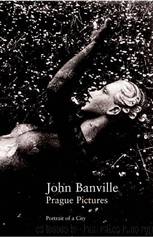Prague Pictures: A Portrait of the City by John Banville

Author:John Banville [Banville, John]
Language: eng
Format: mobi
Publisher: Bloomsbury Publishing PLC
Published: 2009-06-02T12:00:00+00:00
4
GREAT DANE, LITTLE DOG
The once Danish, now Swedish, island of Hveen, or Hven, or simply Ven - let us choose a middle course and call it Hven - situated in the southeast of Hamlet's Elsinore, is 400 miles distant from Prague, as the seagull flies. The name is said to derive from that of Hvenild, maid-in-waiting to the Lady Grimmel, ruler of the island in the times before time, who is reputed to have murdered her two brothers, one of whom had got Hvenild with child. When Ranke, Hve-nild's boy, grew up, he cast his auntie into a dungeon, where she would starve to death, and set himself in her place as the true lord of the isle. Later, in the thirteenth century, a party of Vikings, led by the Monty Pythonesque Eric the Priest-Hater, stopped off at Hven to do some marauding, in the course of which they destroyed four castles, possibly those that Lady Grimmel had built, at Nordburg, Karlshog and Hammer. Through the following sleepy centuries the island lay at peace save for the violent winter storms that whistled down the Sound. And then, in 1576, there arrived on the rocky shore a large, imposing figure with flowing moustaches and a wedge of silver and gold alloy set into the bridge of his damaged nose, to whom King Frederick of Denmark had granted the island as a gift whereon to build what would become the great observatory of Uraniborg, one of the middling wonders of the Renaissance world.
Tycho Brahe was born in 1546 into the highest reaches of the Danish nobility. The Brahes had been among the first of Denmark's noble families to reject Catholicism in favour of the reformed religion. Tycho's paternal grandfather, Tyge Brahe, died at the siege of Malmo in 1523 defending the Lutheran cause that would bring the Reformation to Denmark, while Tyge's brother Axel had the honour of carrying the sceptre at the coronation of the militant Lutheran King Christian III in 1537. When Tycho Brahe was two years old, he was abducted from his parents' castle at Knudstrup, in what is now southern Sweden, by his uncle Brahe and his wife Inger Oxe (wives in Denmark then kept their maiden names after marriage). Mysteriously, Ty-cho's parents made scant protest at this piece of inter-family high-handedness, despite the fact that Tycho's twin, a boy, had died at birth;18 it seems that put it to Tycho's father that since he already had another son, while he and his wife were childless, it was only right that he should share his bounty. Tycho himself in later life was sanguine in the matter, saying only that Jorgen and Inger had supported him generously on their estate at Tostrup and treated him as their own son.
The Brahes were a warrior clan, but happily, through his kidnapping, Tycho came under the influence of a very different family. The Oxes, his Aunt Inger's people, put a high value on learning and culture. Inger Oxe's brother Peder was a man of great influence in Denmark, a kingmaker and member of the Council of the Realm.
Download
This site does not store any files on its server. We only index and link to content provided by other sites. Please contact the content providers to delete copyright contents if any and email us, we'll remove relevant links or contents immediately.
Spell It Out by David Crystal(35361)
Underground: A Human History of the Worlds Beneath Our Feet by Will Hunt(11268)
A Year in the Merde by Stephen Clarke(4667)
Venice by Jan Morris(2056)
Claridge's: The Cookbook by Nail Martyn & Erickson Meredith(1968)
My Paris Kitchen: Recipes and Stories by Lebovitz David(1895)
A TIME OF GIFTS by Patrick Leigh Fermor(1853)
The Plantagenets by Dan Jones(1622)
Welcome to the Goddamn Ice Cube by Blair Braverman(1607)
Bang Poland: How To Make Love With Polish Girls In Poland by Roosh V(1594)
Top 10 Prague (EYEWITNESS TOP 10 TRAVEL GUIDES) by DK(1571)
From Russia with Lunch by David Smiedt(1554)
The Finnish Way by Katja Pantzar(1539)
The Isle of Mull by Terry Marsh(1522)
A TIME TO KEEP SILENCE by Patrick Leigh Fermor(1501)
Rick Steves London 2018 by Rick Steves & Gene Openshaw(1497)
A Taste of Paris by David Downie(1493)
Merde in Europe by Stephen Clarke(1438)
Insight Guides Experience Tokyo by Insight Guides(1421)
